
Code Vein II seems to embrace the identity that its predecessor cultivated through the loyal fanbase it found
The first Code Vein may not have set the world on fire, but it did find its own loyal audience that feverishly vouched for the “anime Soulslike”. A common sentiment that many Code Vein players shared is that despite its flaws, it was a solid first attempt that has a lot of potential to see improvements if it ever got a sequel. Six years since the release of the first Code Vein, the developers over at Bandai Namco Studios and Shift are back with Code Vein II.
Bandai Namco invited me to see a special presentation on Code Vein II that shared new details behind closed doors. Some of the first things shared was that the developers identified that two of the most popular features from the first Code Vein, based on player feedback, were its character creator and the AI partner character system. They strived to expand on both of these features that were so heavily praised from Code Vein II’s predecessor.
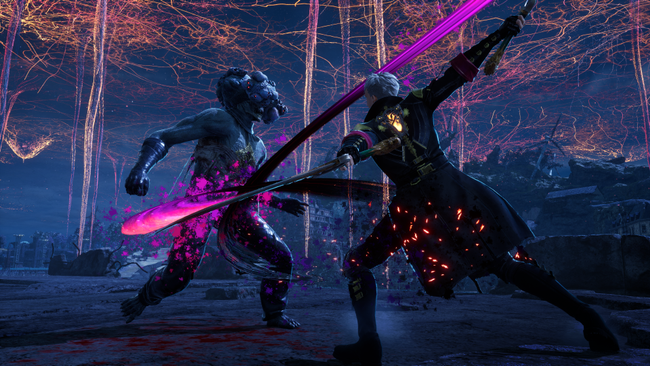
Code Vein II was described as “a complete reimagining” that revolves around a new narrative that has players frequently travel between the past and the present. This is possible with the help of the main heroine Lou, who possesses the power to control time.
While many aspects of Code Vein II’s story specifics remain a mystery, Bandai Namco shared that Revenants will still be a huge aspect of its plot. For those unfamiliar, Revenants are essentially revived humans that’ve been transformed into beings that can use vampiric powers. As a Revenant, the only thing that can kill them is by destroying their heart. Both humans and Revenants have coexisted with one another in the world of Code Vein since ancient times, and that relationship will be further explored in Code Vein II.
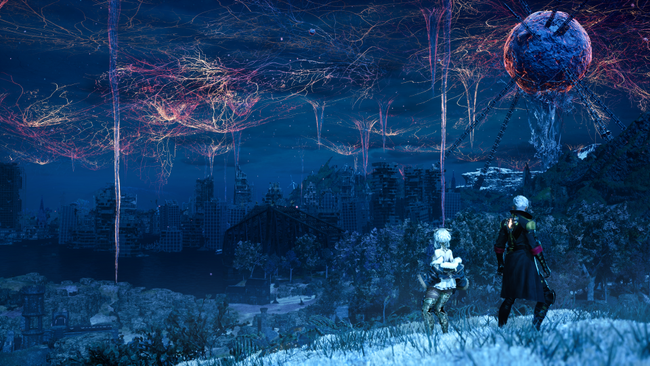
Through time-travel, Code Vein II offers a storyline that is both on the brink of destruction and the ongoing consequences of an apocalypse that has already taken place. Traveling to the past through Lou brings players back a hundred years before present time. The past highlights a phenomenon referred to as the Resurgence, in which the appearance of the gigantic enigmatic Luna Rapacis orb began turning humans into mindless hostiles and Revenants into monsters called Horrors.
There is a clear visual difference between the past and present time periods in Code Vein II, and the most immediately noticeable difference between them is their skyboxes. The past has a dark, ominous sky that is covered by numerous neon “branches” glowing throughout it. Meanwhile, the present unexpectedly has a clear, bright-blue daytime sky that has less pronounced branches sprawling.
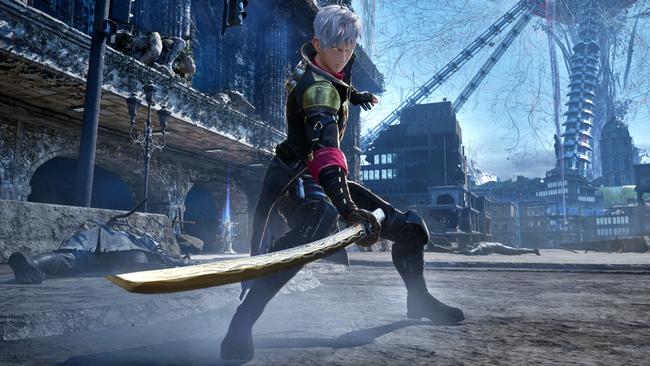
People take control of a human Revenant Hunter, while Lou is a Revenant herself. Their relationship forms shortly after the start of the game; the player’s protagonist dies and Lou resurrects them by offering part of her heart. Lou’s character design is deliberately strange, since her bust area is ostensibly a large gaping hole that shows her heart - and that is also reflected at the back of the protagonist too.
Blood Codes do make a return in Code Vein II, as well. This was the class system from the first Code Vein, and players gradually unlocked more classes as they played the game. People could seamlessly switch to different Blood Codes on the fly, and they each had Gifts that emphasized their combat roles. Each Blood Code affected a player’s base stats, but further tweaking can be done through Code Vein II’s new Booster system. There weren’t many details shared on the specifics of how the Booster system would work, but players won’t be beholden to a Blood Code’s predetermined stat growth alone. Boosters will presumably let people tweak their desired stats, without having to accept the stat shortcomings of a Blood Code severely.
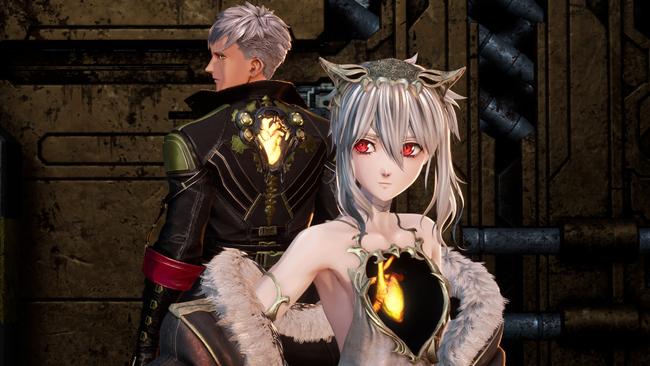
Although Code Vein II still has a lot of time till its release in 2026, Bandai Namco did show some brief clips of the game in action. They noted that Code Vein II will have seven weapon types in total, and two of them will be brand-new though they weren’t ready to reveal what they were. We did get to see several returning weapon types, including one-handed swords, two-handed swords, and the unconventional bayonet rifle.
Some of the combat mechanics at play in Code Vein II were Jails and Formae. Jails seem to be a special type of device that involves the Revenant heart on the protagonist’s back that give them access to a unique ability, such as the bat wings shown in the announcement trailer. I’m not entirely sure if these are only for flashy finisher attacks, or have a more expansive role.
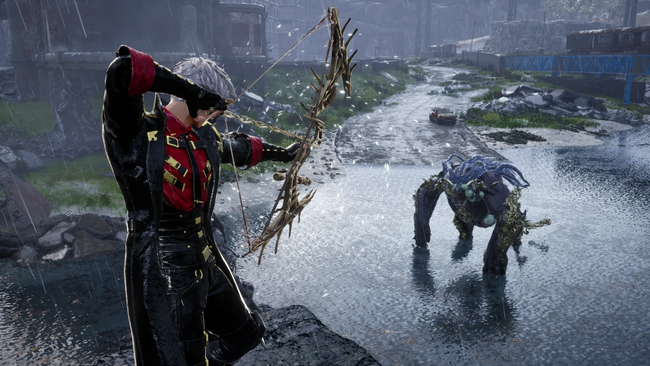
Executing Jail attacks does replenish ichor, which was a valuable resource in the first game. Think of these as “mana” for players to use Gifts, or as ammo for the bayonet rifle for that specific weapon type. Drain attacks also return in Code Vein II, so Jails are an additional method to replenish ichor alongside it.
Formae are the terms for other sets of abilities and actions, since Formae can either be Combat, Defensive, or Bequeathed. Defensive Formae affect actions like guarding and parrying. Bequeathed Formae, on the other hand, are special summonable weapons that are unlocked after defeating challenging bosses. An example of a Bequeathed Formae is a combat bow that people acquire after defeating a certain boss.
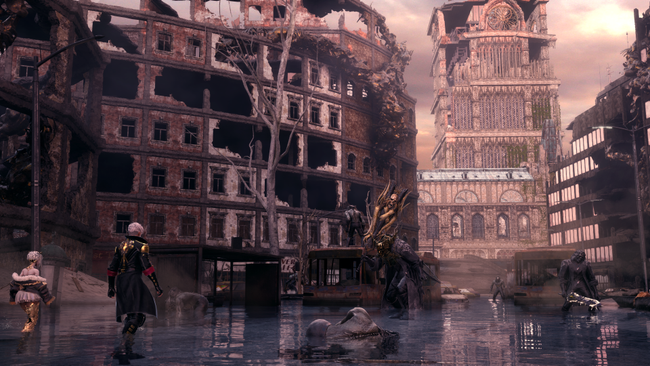
Just like in the first Code Vein, there will be other Revenants that players can befriend and serve as their allies in combat. Some can divert the attention of the enemies to themselves, so people can go on the offensive without all the enemies focusing on them.
There will also be an element of manipulating the environment to open up new pathways between time periods. Actions such as destroying a bridge or removing a boulder can reveal new routes for players to travel through. Oddly enough, this reminded me of Onimusha 3: Demon Siege.
Throughout the gameplay demo, I wondered if Code Vein II would be more structurally expansive than the first game. Although the first Code Vein had seamless areas that players could travel to, similar to the Dark Souls series, it was all laid out in a fairly linear fashion. There were a few areas in Code Vein II that were so big that a motorcycle could be summoned to traverse through it quicker, which has me questioning if there was an open world aspect to it, or if some zones were just going to be bigger and more open than others. The presenter kept using the term “dungeon” even in these larger areas, so I’m not sure what to think.
There was some quick glimpses of the updated character creator in Code Vein II, but it was quickly glossed over unfortunately. I couldn’t get a good read on what was new in it, since its predecessor already had a ton of options to craft someone’s ideal anime character. They did mention there would be around 20 voice options for the protagonist.
This early look at Code Vein II already shows that they have big ambitions for this sequel. The first Code Vein felt like they were dipping their toes into a genre that they didn’t quite have their head wrapped around yet. Therefore, several Code Vein players understandably felt that the flow of the game felt stiff, which sorta betrayed the spurts of frenetic, flashy action it allowed. Code Vein II is positioned to be a big step-up now that its developers have a better understanding of what they, and their players, want this game to be.